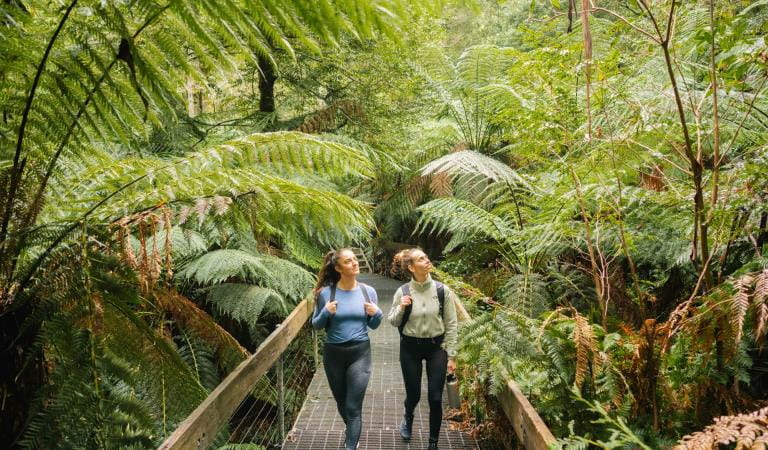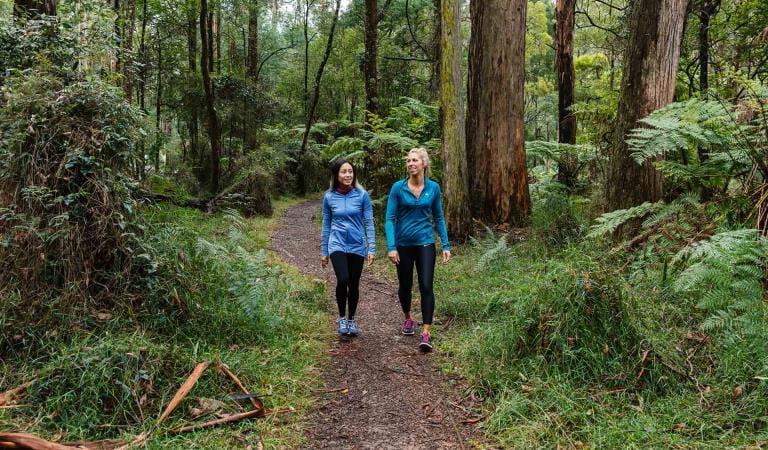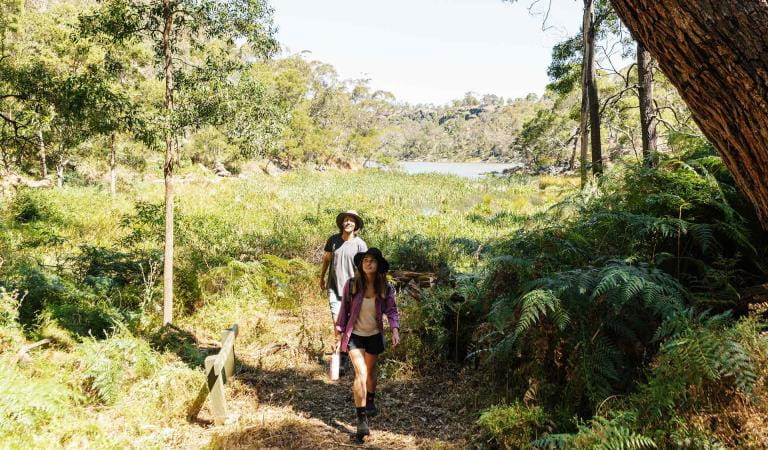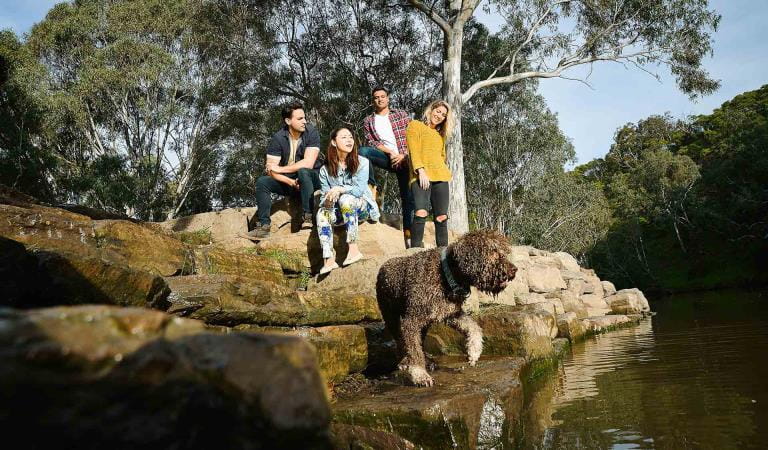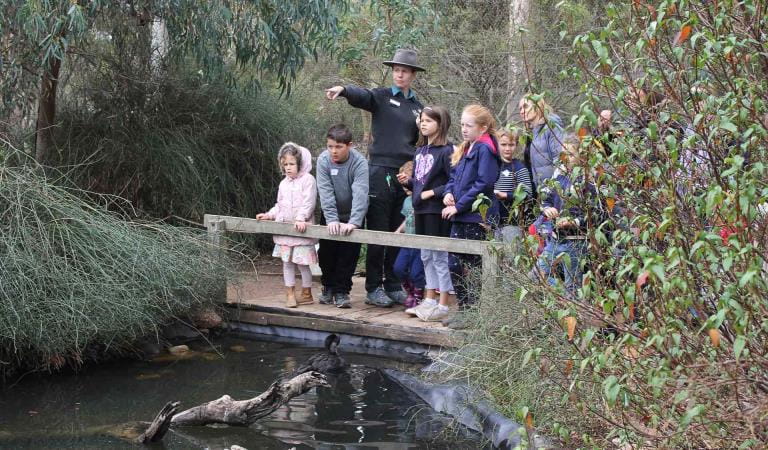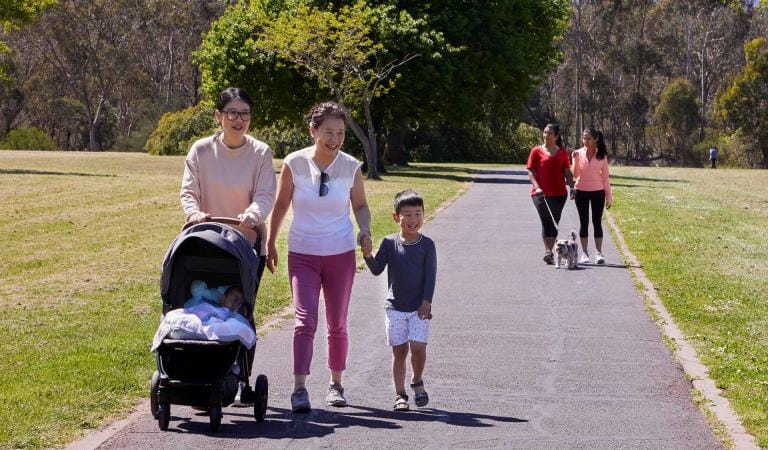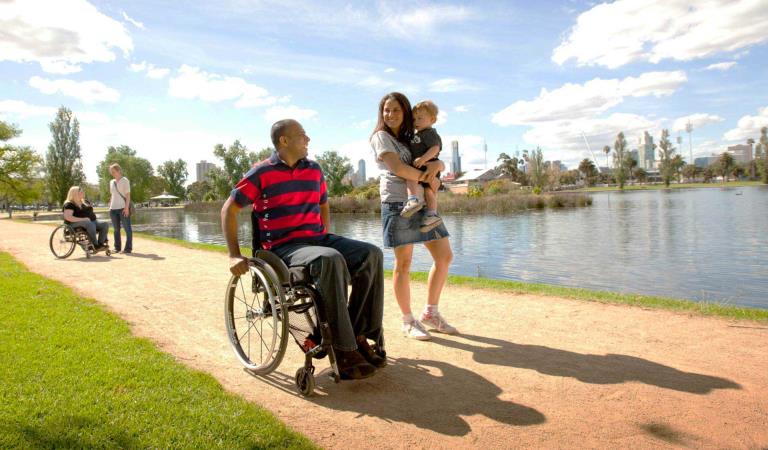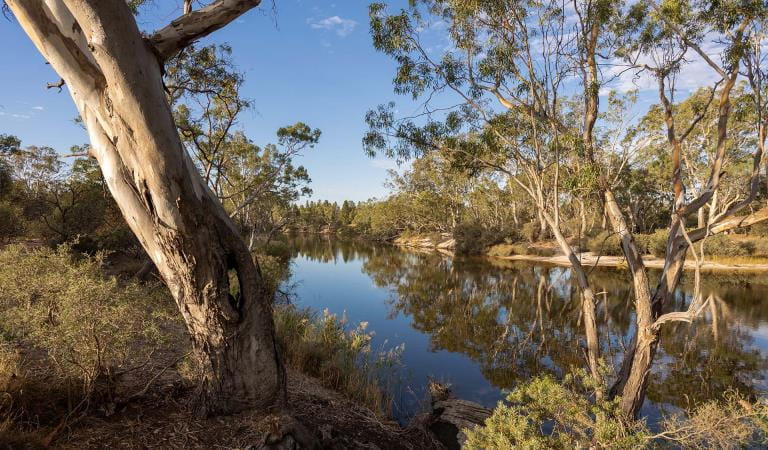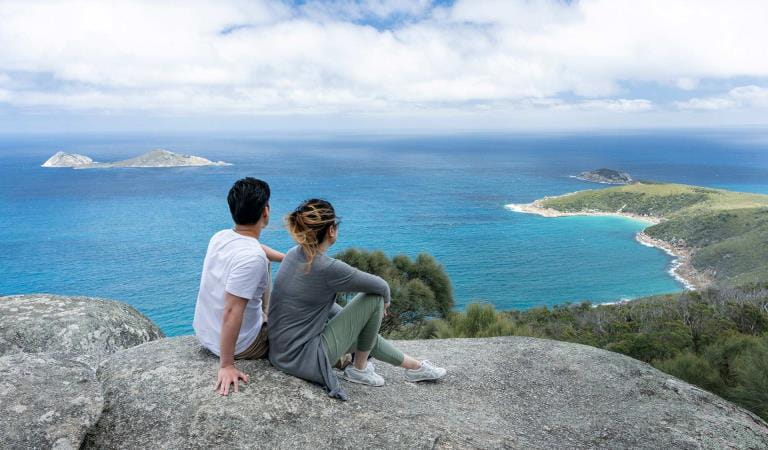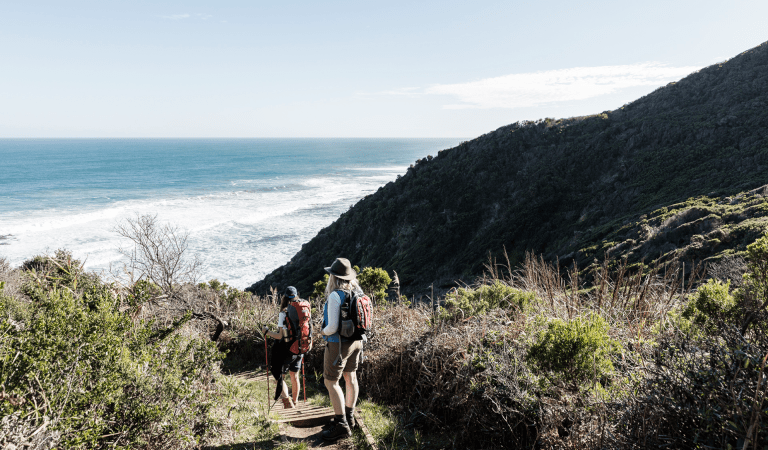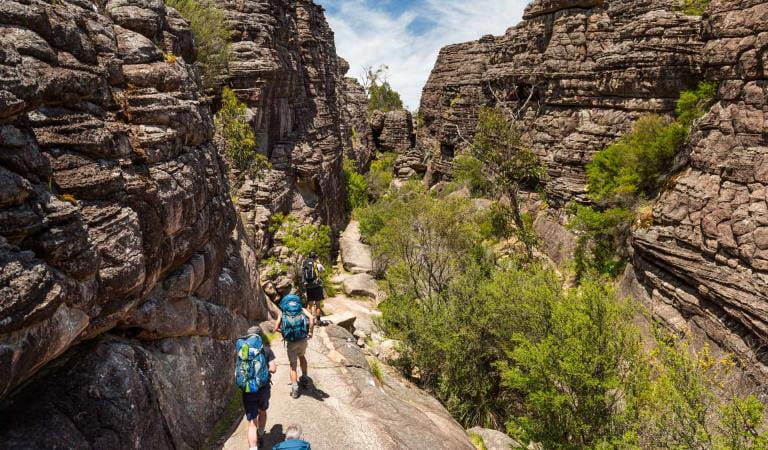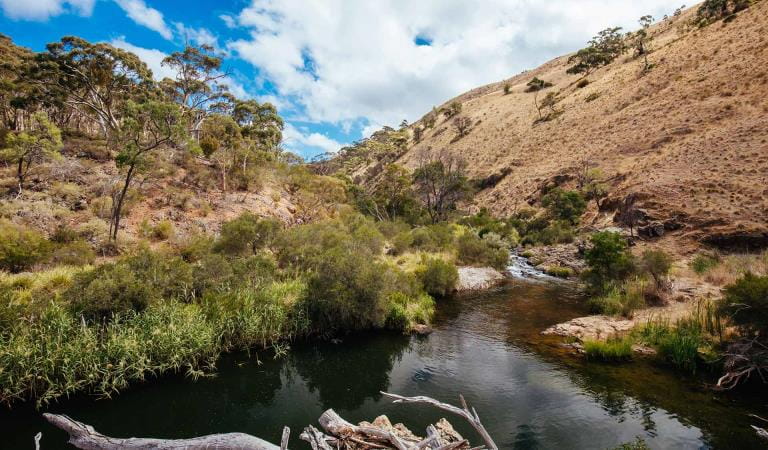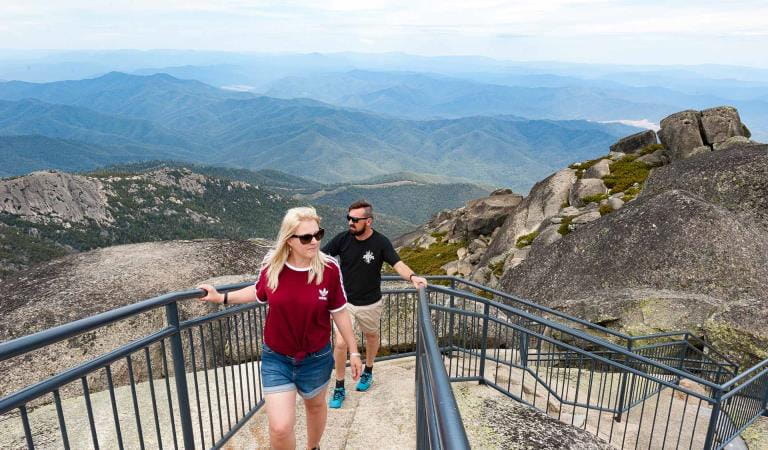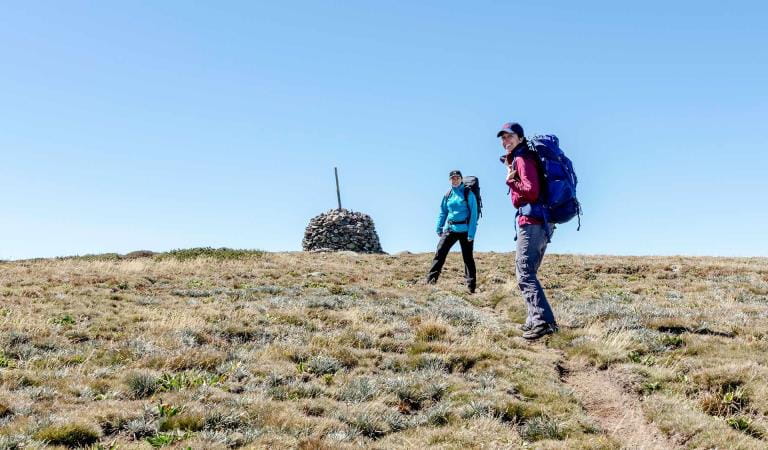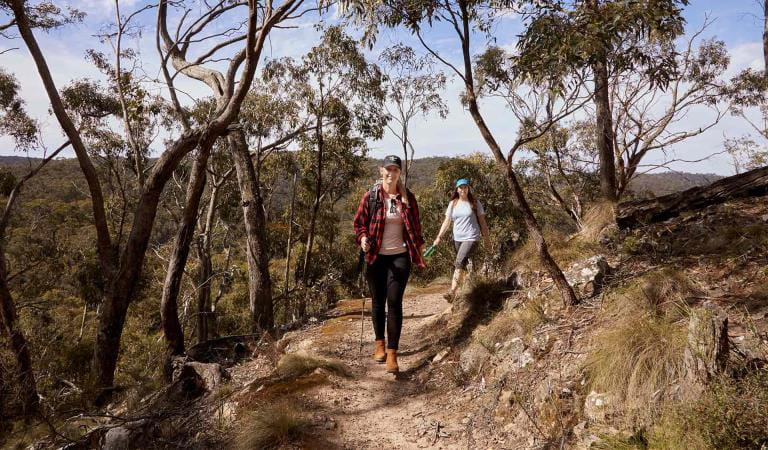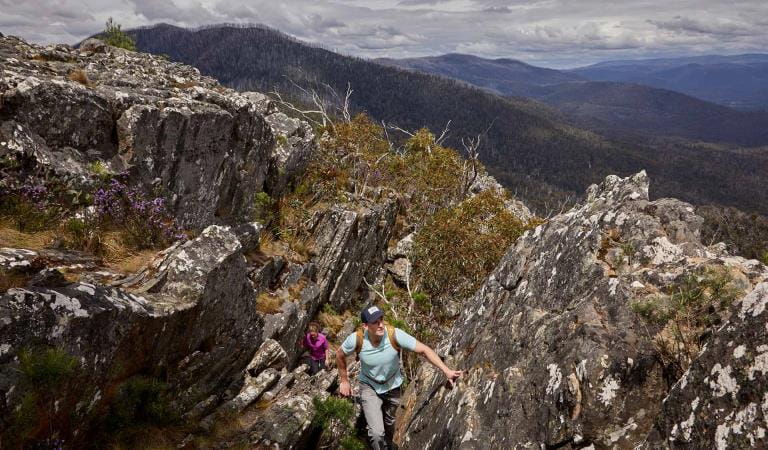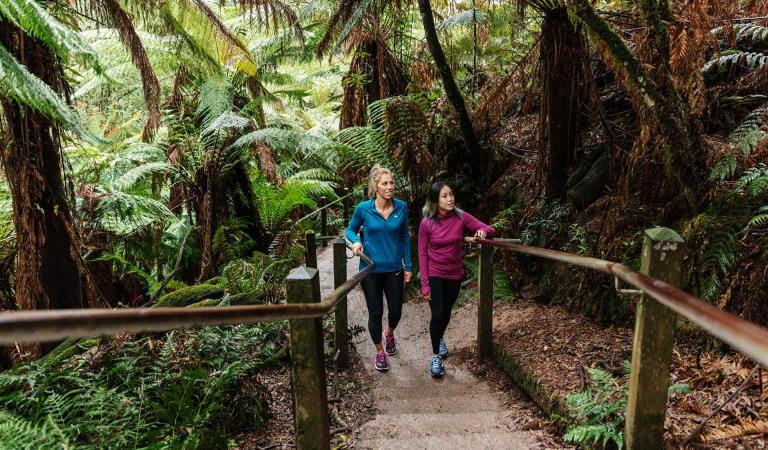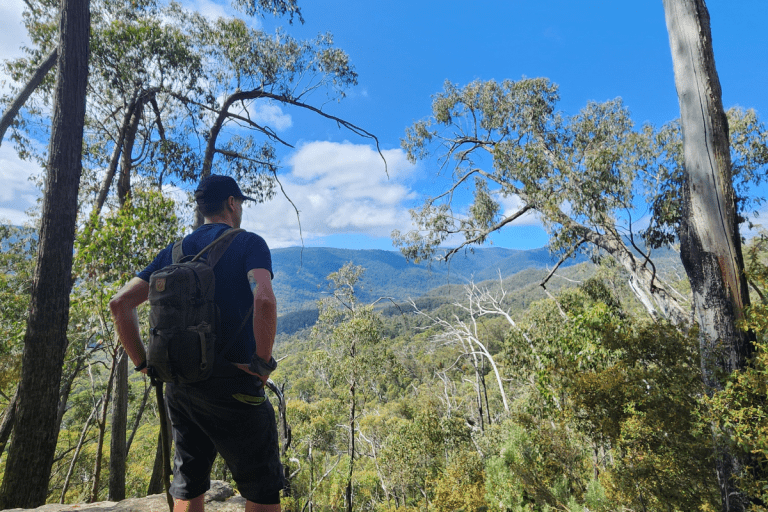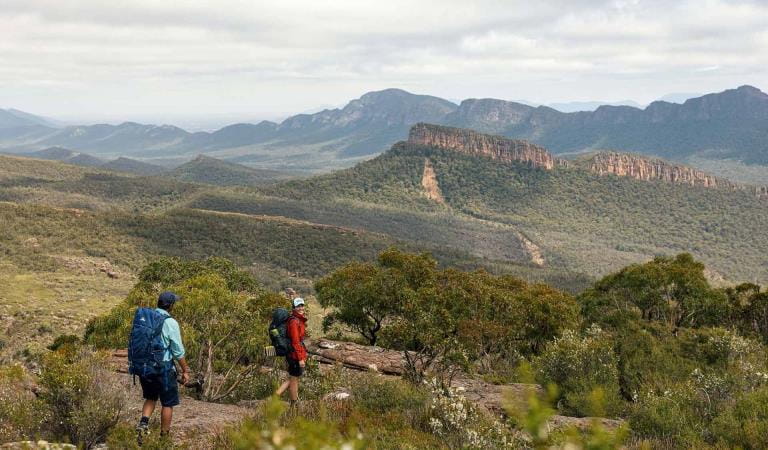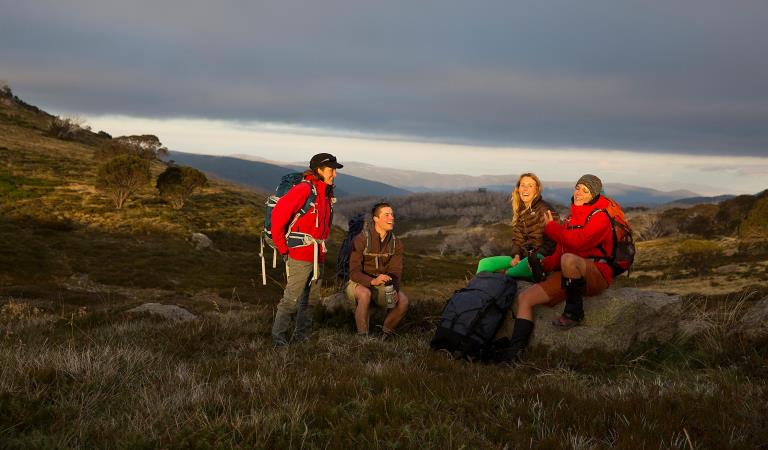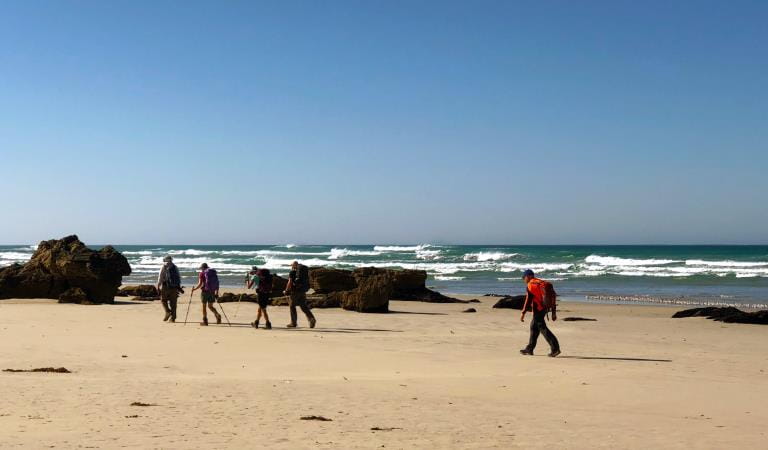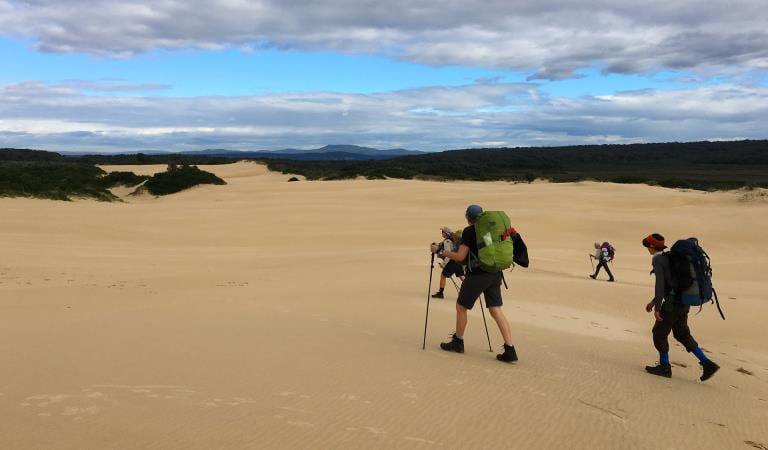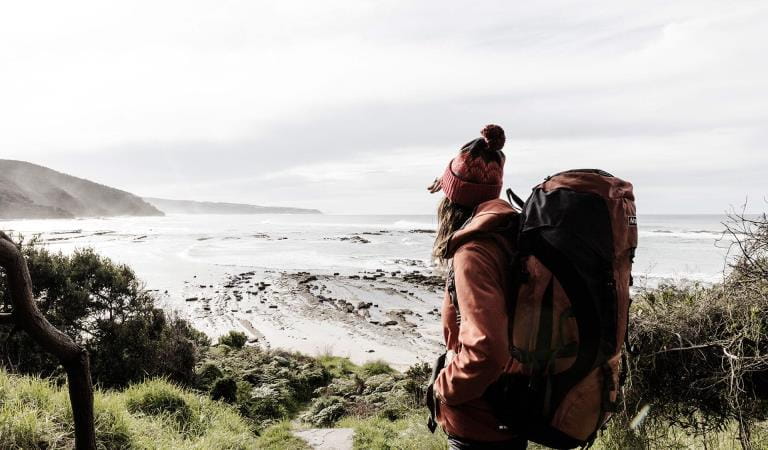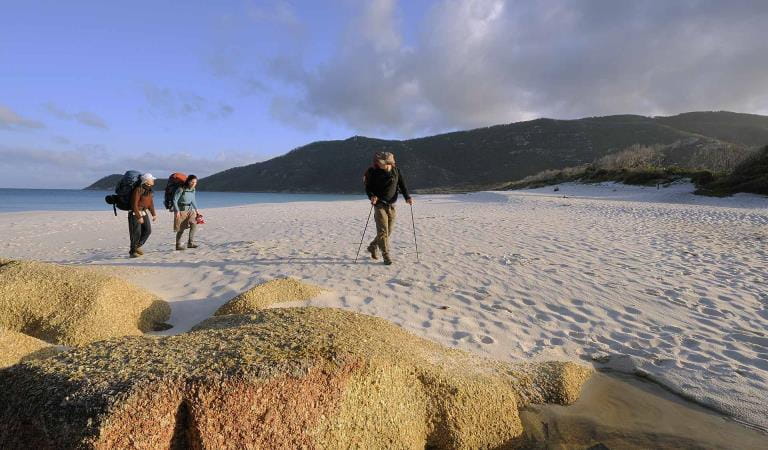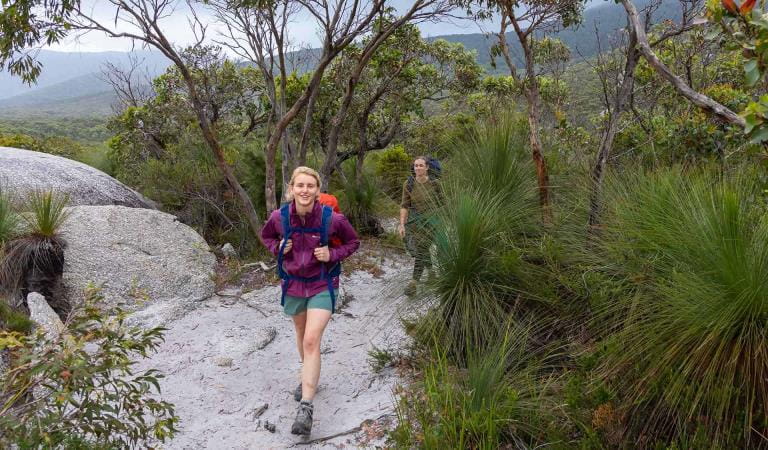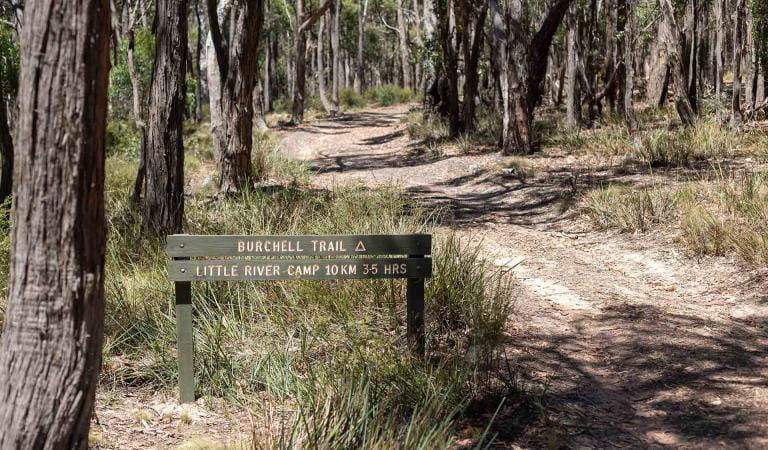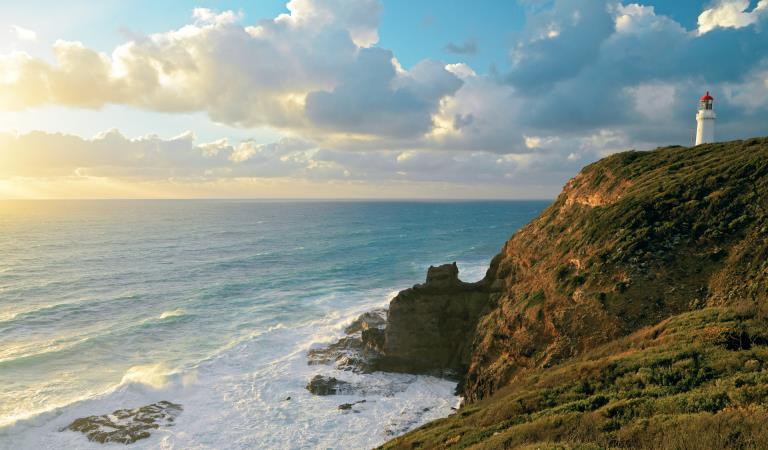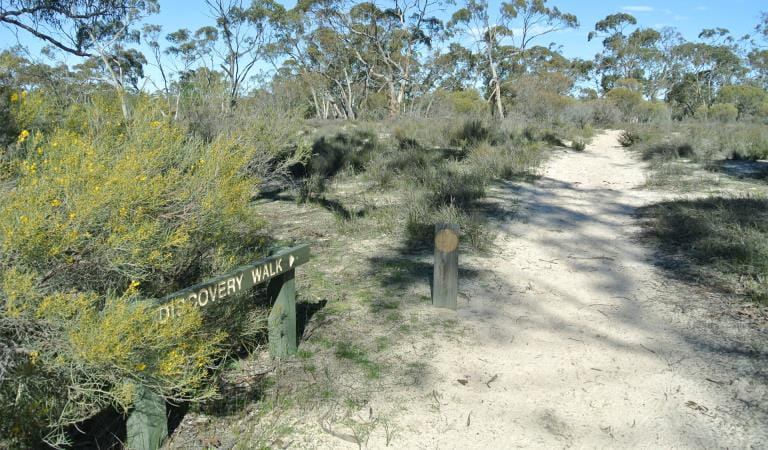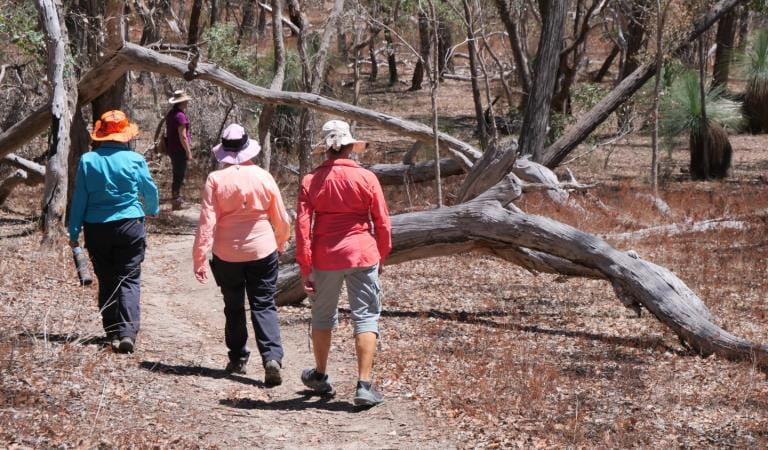Victoria's stunning landscapes, from rugged coastlines to majestic mountains, offer an unparalleled playground for hikers, walkers, and bushwalkers of all abilities.
Explore a diverse range of trails, from family-friendly short walks near Melbourne to multi-day expeditions in remote wilderness areas. Immerse yourself in nature, improve your fitness, and create unforgettable memories. Reach summits with some of the most spectacular views in Australia.
What’s more, research shows hiking has many valuable mental and physical health benefits. Read on to get inspiration for your next hike and gather essential information for your next adventure.
Where to hike or walk in Victoria
Victoria’s national and state parks and reserves offer thousands of kilometres of trails to hike, walk or bushwalk - from leisurely strolls to challenging multi-day treks.
Explore the beginner-friendly rainforest trails in Yarra Ranges National Park, walk remote coastal bushland tracks in Wilsons Promontory National Park, hike a section of the iconic Great Ocean Walk or tackle the 13-day Grampians Peaks Trail (GPT) for a truly epic adventure – Victoria's parks are full of diverse and captivating natural beauty.
We’ve compiled our favourite parks, places and trails to visit in Victoria across all experience levels so you can plan and find the right trail for you. Including:
- Beginner hikes, walks, and bushwalks
- Intermediate hikes, walks and bushwalks
- Overnight and multi-day hikes
For even more inspiration on things to see and do in Victoria's parks, subscribe to our Outdoor Inspiration e-newsletter.
Hiking, walking and bushwalking information
To ensure a safe and enjoyable experience, it is important that you adequately plan and prepare before heading out on a hike, walk or bushwalk. Always consider your fitness level, experience, group size, available time, and weather conditions before choosing a trail. Every walk is different. Visit the park page and read the walking information available to help decide if a trail is right for you.
-
When to go
In Victoria you can hike and bushwalk all year-round. The warmer months (early summer, autumn, and late spring) are usually the most popular times to go, which means the trails can get busy. To avoid crowds, consider visiting mid-week or leaving early.
Before you leave home, check the latest park conditions on the Parks Victoria website, fire danger rating and download the VicEmergency app. The VicEmergency app can be downloaded from the App Store or Google Play.
Do not go for a hike or bushwalk if there is high fire danger rating.
-
Safety
- Check Conditions: Before heading out, always check park conditions and download visitor guides for activities, safety regulations, and facilities.
- Learn the Grading System: The Australian Walking Track Grading System (AWTGS) helps you choose trails that match your fitness and ability. It is important you know how walks are graded before deciding where to go.
- Download Maps: Use the Avenza PDF Map app to access park maps offline and track your real-time location
-
Hiking with others
- Decide on a companion: Solo hiking can be safe for experienced hikers but consider joining a bushwalking group, park walk or taking a guided tour if you're new to the trails. When choosing someone to go with, choose companions who have a similar level of fitness and experience. When walking always stay with your group and match your pace to the people you are walking with.
- Inform someone: Always let someone know where you're going and when you expect to return.
Find more information and safety tips on our hiking safety page. Or, scroll to view our frequently asked questions about hiking, walking, and bushwalking in Victoria.
Hikes and walks for all levels in Victoria
Explore our top picks for the best parks, trails, and regions to explore across Victoria’s parks, depending on your experience.
Beginner hikes, walks, and bushwalks
Enjoy stunning scenery and fresh air on shorter, easier trails perfect for those new to exploring the outdoors. Visit the park page or explore the visitor guides to find a walk that suits your pace and interests.
What to expect:
- Grades: 1-2
- Distance: Usually under 10km.
- Duration: 1-2 hours.
- Terrain: Mostly flat or gently sloping ground with well-maintained trails.
- Difficulty: Suitable for people with either minimal or no bushwalking experience.
Inspiration for beginner-friendly walks
5 best beginner hikes in Yarra Ranges National Park
Mindfulness walks in nature
Top circuit walks
Your A-Z guide to Victoria’s dog-friendly walking trails
Walks at Serendip Sanctuary
Top 10 pram-friendly walks
All abilities walks
Walks in Little Desert National Park
Intermediate hikes, walks and bushwalks
Looking for a longer, more challenging adventure? Our parks offer a variety of intermediate trails with breathtaking views, perfect for a half-day or full-day adventure. Consider staying overnight in the region to make the most of your experience.
What to expect:
- Grades: 3-4
- Distance: Usually under 20km.
- Duration: 2+ hours-full day.
- Terrain: May include gentle hills, steep sections, rough surfaces, or many steps.
- Difficulty: Requires a good level of fitness and bushwalking experience.
Inspiration for intermediate walks
Day Walks at Wilsons Promontory National Park
Short and Day Walks along Great Ocean Walk
Day walks at Grampians (Gariwerd) National Park
Walking at Werribee Gorge State Park
Mount Buffalo National Park
Alpine National Park
Lerderderg State Park
Cathedral Range State Park
Dandenong Ranges National Park
The Best Cathedral Range Day Hike
Overnight and multi-day hikes
Our overnight and multi-day hikes offer unforgettable experiences for skilled hikers and those with a high level of fitness. From alpine meadows to rugged coastlines, these iconic trails will leave you with memories that last a lifetime.
Most multi-day hikes with campgrounds/accommodations require a reservation. Make sure you book or check the park page to see if a reservation is required before heading out.
What to expect:
- Grades: 4-5
- Distance: May be over 20kms
- Duration: 5+ hours, potential for up to several days. Some trails provide campsites for overnight stopovers.
- Terrain: Can include rugged terrain, steep inclines, and challenging conditions.
- Difficulty: Requires excellent physical fitness, bushwalking experience, and proper equipment suited to the grade of the hike.
Best parks for a longer walk
Grampians Peaks Trail
Falls to Hotham Alpine Crossing
Great South West Walk
Wilderness Coast Walk
Great Ocean Walk
Wilsons Promontory Northern Overnight Hikes
Wilsons Promontory Southern Circuit Overnight Hikes
Burchell Trail
Two Bays Walking Trail
Little Desert Discovery Walk
Joining a local bushwalking club
Hiking in Victoria FAQs
-
What’s the difference between a hike, walk and bushwalk?
Hiking, walking, and bushwalking are terms often used interchangeably with others like rambling, trekking, and tramping.
Walking is generally a leisurely activity that most people can do for exercise or transportation. It's a low-impact way to improve physical, mental, and social well-being and can be enjoyed with friends, family, or pets.
Bushwalking involves walking in natural environments, often through Australian bushland. It offers opportunities to enjoy fresh air, see wildlife, and experience unique landscapes. Bushwalks range from easy strolls on well-maintained paths to challenging expeditions requiring careful planning and equipment.
Hiking typically involves walking on rugged terrain and demands a reasonable level of fitness. It’s often associated with longer walks and spending longer periods of time outdoors. Hikers explore new areas, appreciate nature, and get exercise. Due to its challenging nature, including hills and uneven ground, proper gear and preparation are essential.
-
How do I choose the right trail for my fitness level and experience?
Before you head out to a park, it’s important to be realistic about your fitness level and what you can manage. If you’re new to hiking, start with shorter, easier trails close to home to build your fitness and confidence safely.
To help you find the right trail, use the Australian Walking Track Grading System (AWTGS). It’s a simple and helpful tool that rates the difficulty of trails from Grade 1 (very easy) to Grade 5 (very hard).
You can find the grade symbols online, in visitor guides or on signs to help you choose a trail that suits you. The track grade, weather conditions and your general health and fitness levels will impact the difficulty of the hike.
-
Is it safe to hike in Victoria’s parks?
With proper planning and preparation, hiking in Victoria's parks can be safe and enjoyable. Check the park’s page for important updates and see our hiking safety page for tips and checklists.
To stay safe, follow these guidelines:- Pack and prepare according to the weather forecast. In summer, avoid hiking in the middle of the day; in winter, finish before dark.
- Always check for bushfire risks, storms, and weather conditions before heading out.
- Avoid hiking on high fire danger days or when storms and strong winds are expected.
- Download a park map or offline maps like Avenza before you go.
-
Is there drinking water and toilets available in parks?
Facilities vary between parks, so it's important to check the park page or visitor guide for information about toilets and drinking water.
If you're planning a full day of hiking or walking, we recommend bringing at least 3-4 litres of water per person.
-
Can I take my dog with me?
Dogs are not allowed in national parks, but many regional parks do allow them. Before you go, check the park's page on our website to see if dogs are permitted. Dogs must always be kept on-lead.
-
Do all trails have signage and maps?
Not all trails have signs or maps. Before you go, download the visitor guide for the park and an offline map from Avenza.
-
Is there mobile phone reception in parks?
Mobile phone coverage can be unreliable, especially in remote areas. Before you go, download the park's visitor guide and offline maps, and make sure to tell someone where you're going and when you'll be back.
Did you know? You can dial 112 for emergency help from any available network, even without signal. If you’re going into isolated areas, carry a Personal Locator Beacon (PLB) for extra safety.
-
What do I pack before heading out for a hike, walk or bushwalk?
Each season brings unique risks, so prepare accordingly. In warmer months, sun protection and extra water are essential, while colder weather calls for added warmth and emergency gear. Here’s a checklist to help you stay safe and comfortable:
- Sun protection: Wear sun-protective clothing, a hat, and apply sunscreen (reapply if you're out for several hours).
- Extra food: Pack snacks like muesli bars, nuts, or apples.
- First aid kit: Include any medical supplies you may need (e.g., for allergies or bites).
- Spare clothing: Bring layers for changing weather.
- Water: Carry 3-4 litres of drinkable water.
- Navigation: Bring a fully charged smartphone with GPS; take a map photo or download an offline map from Avenza.
- Safety gear: Pack snake bandages and, for colder weather, an emergency blanket, lightweight sleeping bag, or portable shelter.
For longer hikes, like the Grampians Peaks Trail, make sure to be well-prepared. Download the Grampians Peaks Trail Plan and Prepare guide for detailed packing tips for multi-day hikes.


